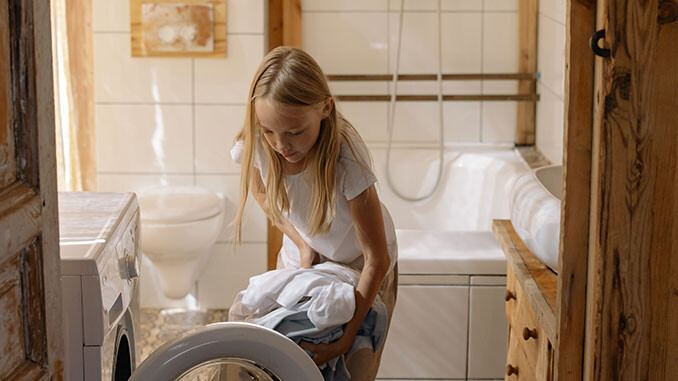
Now in its sixth year, the Care Counts™ laundry program from Whirlpool has grown to support nearly 40 regions in the U.S.
Published: October 2, 2021
While most schools halted in-person learning during the 2020-2021 academic year due to COVID-19, the Care Counts™ laundry program by Whirlpool brand continued to be a resource for students with the help of school leaders and community volunteers. As a result, nearly 90 percent of participating high-risk elementary school students1 enrolled in the program were reported by teachers to feel connected to their school during the 2020-2021 school year.
This year, the program will continue to work with Henry J. Oliver Elementary in Birmingham for a second year as the program has contributed to decreases in chronic absenteeism, and increases in attendance rates, grades and engagement levels among participating at-risk students.
Due to the COVID-19 pandemic, the 2020-2021 academic year brought on significant challenges, including how the program would operate when in-person learning shifted to virtual classrooms. In order to help students who depend on the Care Counts™ laundry program, Whirlpool brand with support from Teach For America, worked with participating schools to find additional ways to ensure students had access to clean clothes, such as providing additional laundry pairs to a local firehouse and daycare center when Summit Academy in Brooklyn could not open their doors to it’s students. In analyzing the most recent data from the 2020-2021 school year:
- A total of 177 students/families participated in the Care Counts™ laundry program and were in regular contact with their school during the 2020-2021 school year – an average of nearly 15 students per school, which compared similarly to pre-pandemic enrollment.
- Nearly 64 percent of participating high-risk elementary school students2 were not chronically absent following the Care Counts™ laundry program by Whirlpool implementation, despite the challenges of remote learning and the stressors of the pandemic.
“We’re incredibly thankful for the school leaders and volunteers who went above and beyond to keep the program operational in many regions despite the challenges,” says Laura Fletty, Communications Manager for the Whirlpool brand. “It’s humbling to know that the program continued to help the school community stay connected and that students across many regions were still able to experience the benefit of access to clean clothes.”
Now in its sixth year, the program has expanded to 134 schools in 36 states across the country and is providing access to clean clothes to thousands of students. The Care Counts™ laundry program by the Whirlpool brand has expanded its presence to 16 new schools across five new states in the 2021-2022 school year: Idaho, New Jersey, New Mexico, Oklahoma, and South Carolina. It will continue to work with schools that are participating in a second year of the program in five regions: Alabama, Arkansas, District of Columbia, Kentucky, and Massachusetts.
In addition to the program’s introduction into the five new states, Whirlpool brand recently announced an arrangement with Benton Harbor Area Schools to bring the program to the company’s hometown. A first in the history of the Care Counts™ laundry program, students in every school within a district (Pre-K through high school) will now have access to the resource.
The Care Counts™ laundry program by Whirlpool brand is designed to remove one small but an important barrier to attendance – access to clean clothes – by installing washers and dryers in select schools nationwide. Since its inception in 2015, the program has contributed to decreases in chronic absenteeism, and increases in attendance rates, grades, and engagement levels among participating at-risk students.
To learn more about the Care Counts™ Laundry Program by Whirlpool brand, visit https://www.whirlpool.com/care-counts
1High-risk elementary school students is defined as elementary students at risk of missing 10 percent or more days of school during a reporting period
2High-risk elementary school students is defined as elementary students at risk of missing 10 percent or more days of school during a reporting period
